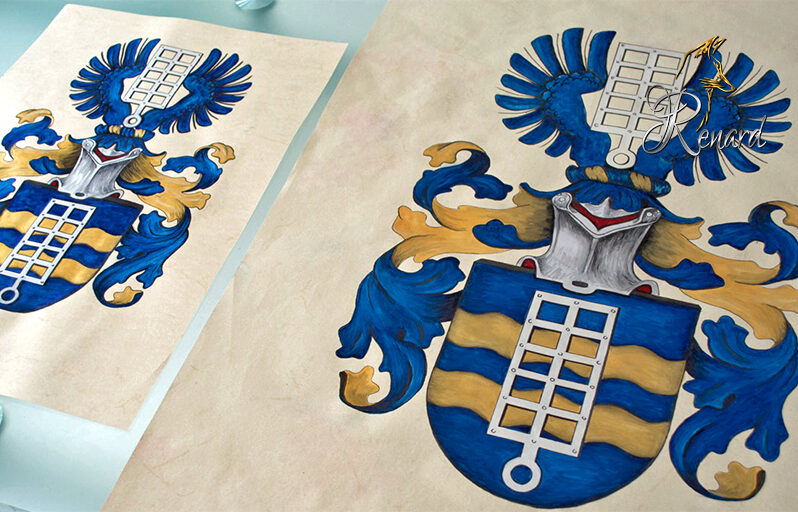Painted Coat of Arms
Paintings of coat of arms of is one of our core competencies, along with family tree drawings. All coat of arms paintings are created 100% by hand. As a rule, we do not offer prints or partial prints. We support our customers with both reproductions of existing coats of arms and new concepts of coats of arms.
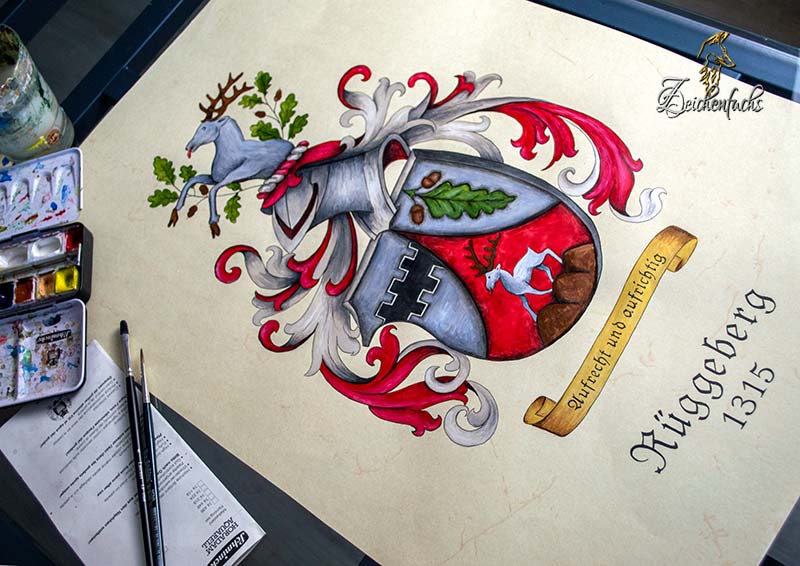
If a coat of arms is already known, we can put it on paper by hand according to the customer’s wishes.
We are often asked whether we are going to redraw an existing coat of arms that has only been preserved in print form or as a photo. Our customers often find out in the course of genealogical research that they are entitled to use a coat of arms. We use these old records to create drawings and paintings in all imaginable sizes. When implementing a coat of arms in colour, we always adhere to the rules of tinting. If we had a lithograph, for example, we would convert the hatching into the corresponding monochrome areas and decorate it if necessary. Coats of arms that are “converted” to the pencil or charcoal technique, however, do not get the typical stippling and hatching by default. As a rule, they are actually classic, black and white variations of a colored coat of arms. When drawing the coat of arms, we focus on the artistic aspect instead of an unequivocal, colored identification of the coat of arms elements.
Construction of a full coat of arms
If a coat of arms is commissioned, in most cases we speak of a full coat of arms. The full coat of arms includes the shield, the helmet, the mantling and the crest.
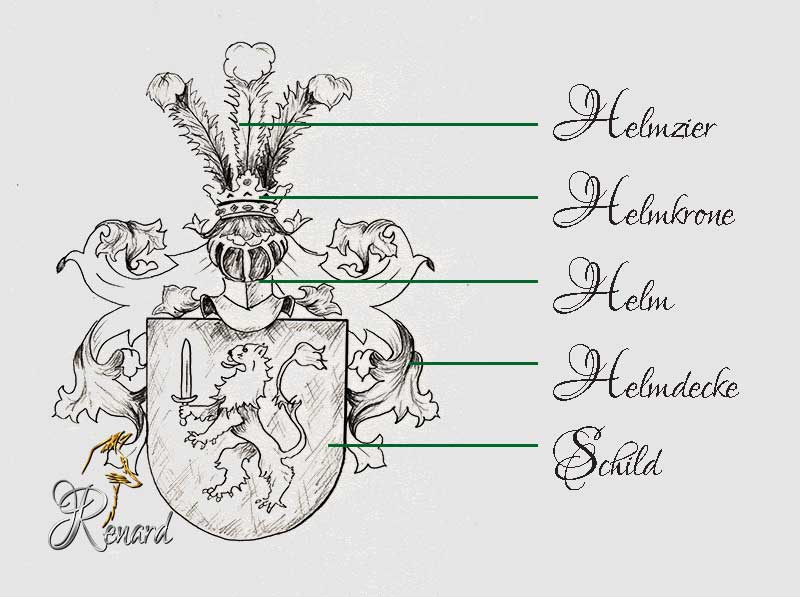
A coat of arms basically consists of several elements that are to be considered individually and are subject to certain heraldic rules and guidelines. The coat of arms forms the lower center of the overall representation. The shape is influenced by the medieval war shields of knights. There is
many variations of shield shape. The heraldic correct design, i.e. the respective content of the shields, is diverse.
The helmet is on the shield. A helmet can be shown frontally or in profile looking to the right, but this is not important in terms of meaning. The visor of the helmet is important for the distinction. An open or grilled visor was that
reserved for the highest nobility. Untitled nobles or commoners were bestowed the closed helmet.
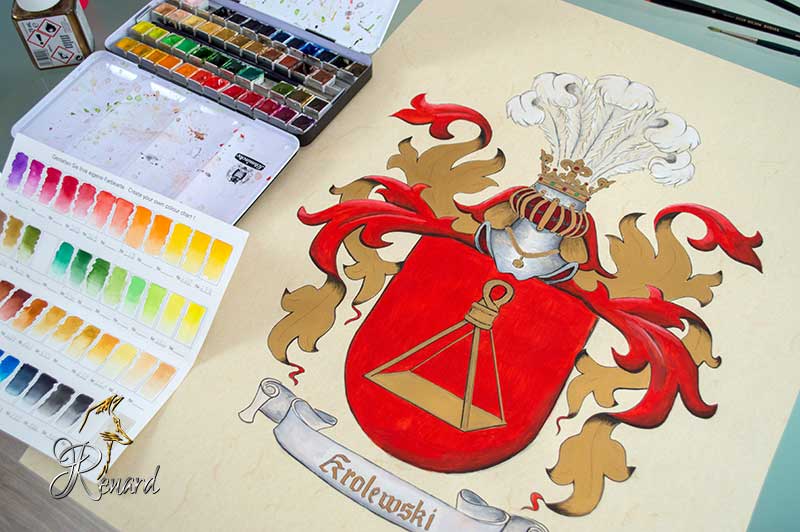
The torse lies on top of the helmet, with the crest above it. The crest can consist of any motif. The flight, various figures and heraldic animals are particularly widespread. The mantling runs from the torse, over the helmet and around the shield. This too has changed stylistically over time. The medieval mantlings are kept simple and unobtrusive, while the forms from the Renaissance and the Baroque era are very dynamic and ornate. A mantling always consists of an outside and an inside, the lining. The lining always consists of a metal, while the outside of the mantling represents a colour.
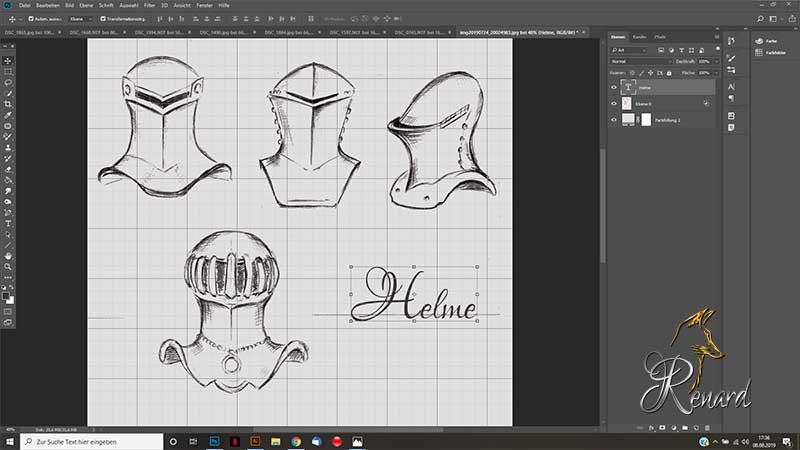
Lettering on paintings of coats of arms
Often one sees the surname in a beautiful ornamental script (often a “broken script”). Individual, smaller lettering is generally not a problem. Fonts on several lines or even lettering with banderoles must be planned in advance, as these could shift the focus of the image. In case of doubt, complex lettering would be advised against, since this reduces the image area for the coat of arms painting and can thus be at the expense of the overall presentation.
A motto can also be positioned under the coat of arms. This describes the motivation of the person or company behind the coat of arms. However, the motto is not an essential part of a full coat of arms and can mean an additional charge.
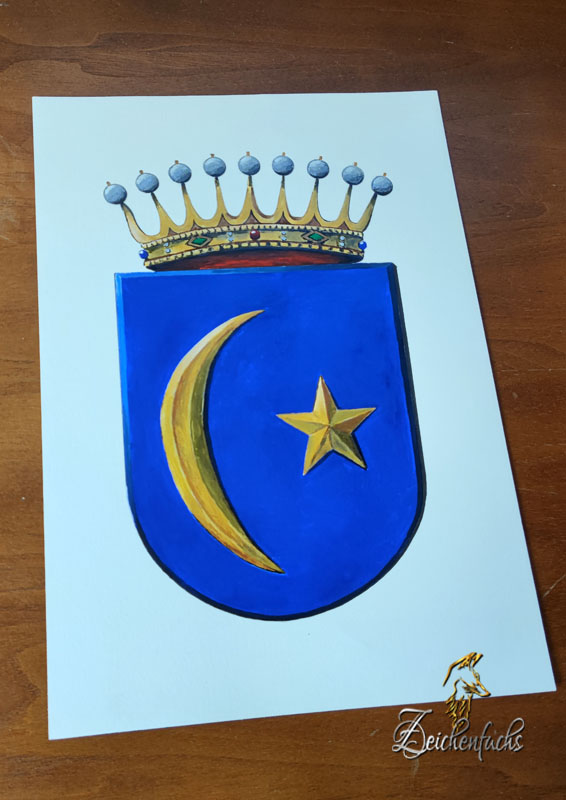
Shields are part of the full coat of arms. However, these are often incorrectly referred to as “coats of arms”. However, since the shield is particularly important for the recognition value of a family coat of arms, a pure shield painting can also be quite attractive and meaningful.
Paintings of shields can also look good on smaller formats such as DIN A5. The image area is sufficient to be able to put even fine details cleanly on paper. Since the crest and the mantling are particularly complex, we can set a lower price for simple shield-paintings than for a full coat of arms.
Painted coat of arms with shield holders
In addition to the main elements mentioned, one often sees sign holders. They are often in the form of animals, placed to the right and left of the coat of arms and “hold” it. Shield holders are not provided for a full coat of arms. For decorative purposes, we can add these to the graphic.
Paintings of coats of arms with shield holders are fundamentally much more elaborate than classic full coats of arms without flanking figures. The format must also be adjusted to an almost square dimension. Paintings with sign holders would be compositionally extremely problematic in DIN format.


